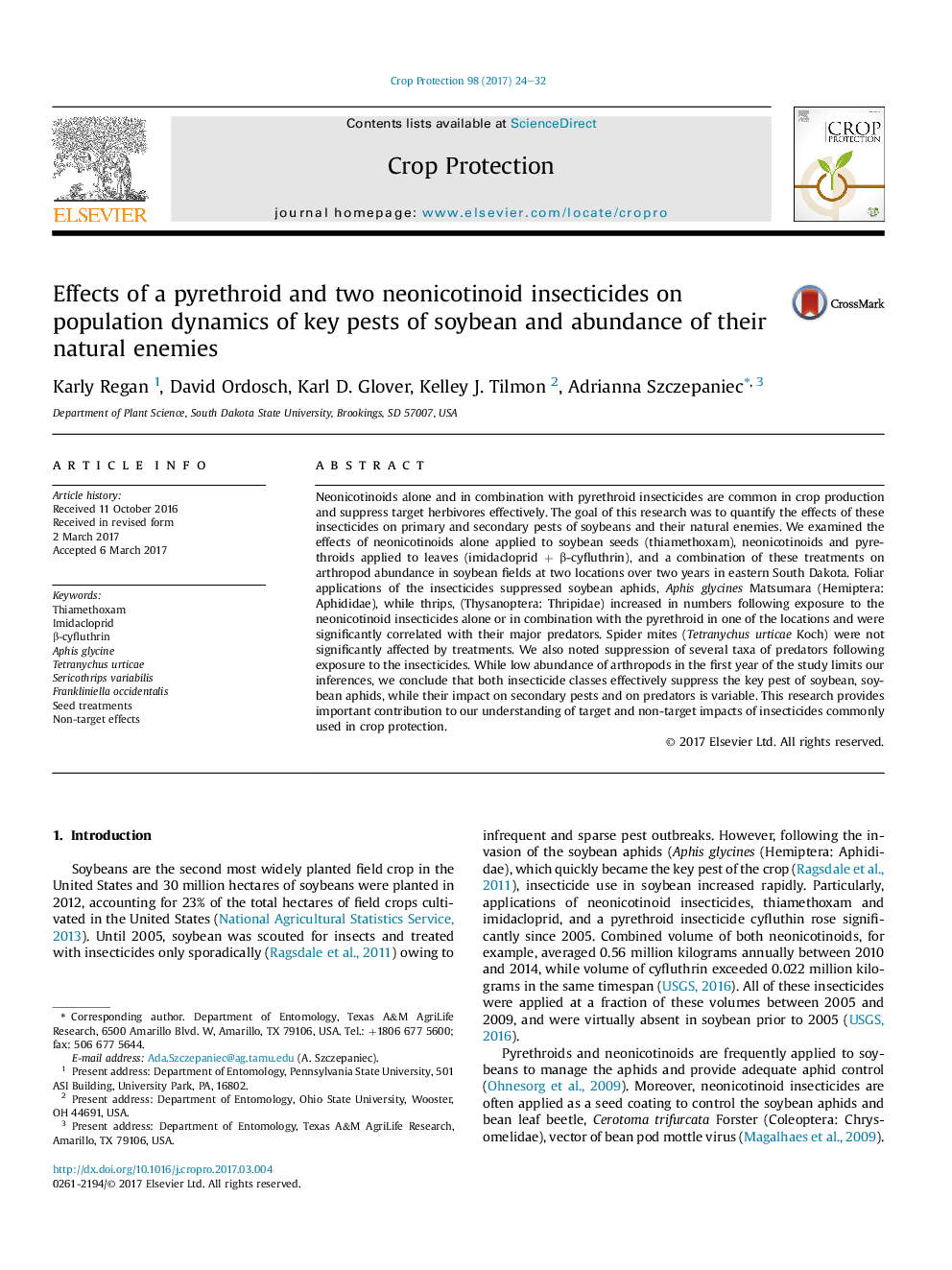| Article ID | Journal | Published Year | Pages | File Type |
|---|---|---|---|---|
| 5760878 | Crop Protection | 2017 | 9 Pages |
Abstract
Neonicotinoids alone and in combination with pyrethroid insecticides are common in crop production and suppress target herbivores effectively. The goal of this research was to quantify the effects of these insecticides on primary and secondary pests of soybeans and their natural enemies. We examined the effects of neonicotinoids alone applied to soybean seeds (thiamethoxam), neonicotinoids and pyrethroids applied to leaves (imidacloprid + β-cyfluthrin), and a combination of these treatments on arthropod abundance in soybean fields at two locations over two years in eastern South Dakota. Foliar applications of the insecticides suppressed soybean aphids, Aphis glycines Matsumara (Hemiptera: Aphididae), while thrips, (Thysanoptera: Thripidae) increased in numbers following exposure to the neonicotinoid insecticides alone or in combination with the pyrethroid in one of the locations and were significantly correlated with their major predators. Spider mites (Tetranychus urticae Koch) were not significantly affected by treatments. We also noted suppression of several taxa of predators following exposure to the insecticides. While low abundance of arthropods in the first year of the study limits our inferences, we conclude that both insecticide classes effectively suppress the key pest of soybean, soybean aphids, while their impact on secondary pests and on predators is variable. This research provides important contribution to our understanding of target and non-target impacts of insecticides commonly used in crop protection.
Keywords
Related Topics
Life Sciences
Agricultural and Biological Sciences
Agronomy and Crop Science
Authors
Karly Regan, David Ordosch, Karl D. Glover, Kelley J. Tilmon, Adrianna Szczepaniec,
